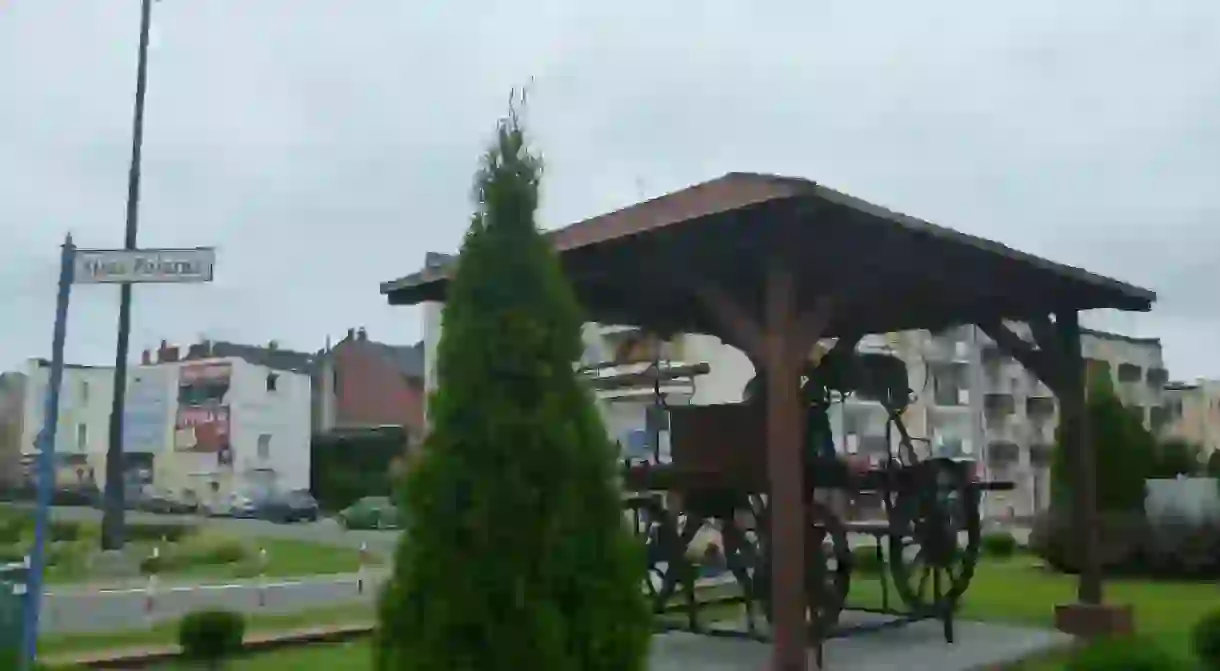Kociewie Village Charm in Poland: Kokoszkowy, Rywałd and Gręblin

The Kociewie region of Poland is a truly charming countryside area in the Pomerania Province with its own unique dialect, culture and history. Kociewians are a group of mostly Roman Catholics and there are rumoured to be only around 3,000 of them (according to the most recent census) spread over a wide geographical area. While there are many towns and cities with Kociewians living in them, an escape into rural village life offers an even more raw glimpse at this unique region. It is also a way to delve into the local Polish culture away from the floods of tourists who base themselves in cities like Gdańsk, Poznań, Kraków and Wrocław.

Kociewie’s Language
For those touring Poland, it may come as a surprise to learn that Kociewie has its own dialect, and you can find some of the Kociewie words here. The locals pride themselves in trying to maintain their heritage. Here are a few words that are notably different in this region from both Polish and English:
(Kociewian – Polish – English)
glómza – twaróg – cottage cheese
łajza – nieudacznik – loser
szachtelek – pudełko – box
Korowód Kociewski na Jarmarku świat. Dominika… robimy hałas w mieście 😉 Zapraszamy na Unikaty z Kociewia 🙂 #kociewie #kochamkociewie #gdansk #jarmarkswdominika
A post shared by Ruszaj na Kociewie (@kociewie) on Aug 3, 2017 at 5:34am PDT
Kociewie’s Capital: Starogard Gdański
The Kociewie Capital is the town of Starogard Gdański, yet the biggest settlement is Tczew, both have no shortage of sights, unusual tourist spots and trendy bars. You can start your journey in Starogard by visiting the Kociewie Museum before heading out into the local villages to explore the region further.

Kociewie’s Culture
Kociewie’s culture includes unique embroidery, cuisine, dialect and housing styles all local to the region. There are many unusual aspects of their culture to explore and after visiting the Kociewie . The Kociewie embroidery is a special way of stitching designs, often with many colours and beautiful floral art. Locals still keep up this hobby and you can buy examples of their work from various shops in the region. To see some great local photos from Kociewie’s residents, checkout the Instagram Hashtags #kochamkociewie and simply #kociewie. Once you have seen the capital and understood some of the culture, delve into the non-urban parts of the Kociewie region to uncover some little gems. There are lots of villages to explore, but to start with here are three idyllic and typical rural Kociewie villages to check out.
Igłą malowane… wystawa w izbie regionalnej w Wycinkach #haft #regionalny #modrak #kwiaty #klosy #serweta #kociewie #kochamkociewie #wycinki #osiek #pomorskie #pomorskietravel
A post shared by Ruszaj na Kociewie (@kociewie) on Sep 3, 2017 at 9:01am PDT
Kokoszkowy

Rywałd
Population – 420
Rywałd on Google Maps
Rywałd is a very small village with a population of only 420. But that doesn’t stop it from being a real off-the-beaten-track tourist gem. The village’s most attractive building is a stunning church and monastery on the edge of town, known as Rywałd Sankturium, which on its own is enough reason to visit.

The Rywałd Sanktuarium website is only written in Polish, and the village doesn’t attract a huge number of tourists. As such, getting a local guide may be helpful. Priests are ordained here; during these ceremonies you will see the proud flying of the Polish and Vatican City flags together.


While the Church will impress you, delve into the natural world here in Rywałd too because the second treat here is a magical forest on the edge of town, which you can explore at your own leisure.
Are we out of the woods?
A post shared by Szymon Cedzik®️ (@szymonismyname) on Aug 5, 2017 at 6:51am PDT
Gręblin
Population – 521
Gręblin on Google Maps
Gręblin is a little village in the district of Pelplin, so not far from the famous Hill of Pope John Paul II and the museum which houses one of only 19 original Gutenberg Bibles, both of these sights feature in the best sights of Pelplin.

The village of Gręblin also boasts a great restaurant and wedding reception venue called Zajazd Arkada, again food and hospitality is typical of the region.

The Gdańsk-to-Warsaw train track passes the edge of little Gręblin but doesn’t actually stop here, which means the village has a unique selling point: in spring and summer months, it makes for a great spot for trainspotters to sit and watch the eclectic range of Polish trains going by.

As with Kokoszkowy, Gręblin has no shortage of farms as well as beautiful yellow rapeseed oil plants; expect all sorts of vegetables to be grown here from potatoes to pumpkins!
#autumn #pumpkin #garden
A post shared by Szymon Cedzik®️ (@szymonismyname) on Nov 3, 2017 at 12:45am PDT













